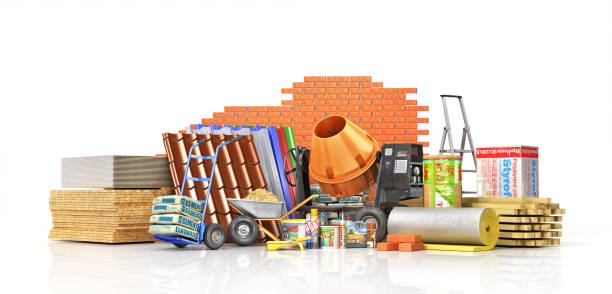In the realm of sustainable construction, the choice of building materials plays a pivotal role. While numerous materials are used in construction, this article delves into the unsustainability of concrete, a widely utilized building material. Concrete, despite its popularity and versatility, poses significant environmental challenges that need to be addressed for a more sustainable future.
- The Environmental Impact of Concrete:
Concrete production is responsible for a substantial carbon footprint, primarily due to the emission of greenhouse gases during cement production. The process of manufacturing cement, a key component of concrete, involves high energy consumption and releases a significant amount of carbon dioxide (CO2) into the atmosphere. Additionally, the extraction of raw materials, such as limestone and sand, contributes to deforestation, habitat destruction, and soil erosion. - Water Consumption and Pollution:
Concrete production requires vast amounts of water, both for mixing and curing. This excessive water usage can strain local water resources, particularly in regions already facing water scarcity. Moreover, the discharge of untreated wastewater from concrete production sites can pollute nearby water bodies, leading to ecological imbalances and harm to aquatic life. - Waste Generation and Disposal:
The construction industry generates a substantial amount of waste, and concrete is no exception. During the construction process, excess concrete is often discarded, contributing to landfill accumulation. Concrete waste not only occupies valuable land but also releases harmful substances into the environment as it decomposes. Finding sustainable solutions for concrete waste management is crucial to mitigate its adverse effects. - Durability and Maintenance:
While concrete is renowned for its durability, its long-term sustainability is questionable. Concrete structures may require frequent maintenance and repairs, leading to additional resource consumption and environmental impact. The use of chemical sealants and coatings to enhance durability can introduce harmful substances into the environment during their production and application. - Alternatives and Innovations:
To address the unsustainability of concrete, exploring alternative building materials and innovative construction techniques is essential. Some promising alternatives include sustainable timber, bamboo, rammed earth, and recycled materials like reclaimed wood or recycled plastic. Additionally, advancements in technology have led to the development of eco-friendly concrete substitutes, such as geopolymer concrete, which significantly reduces carbon emissions.
Conclusion:
While concrete has been a cornerstone of the construction industry, its unsustainability cannot be overlooked. The environmental impact, water consumption, waste generation, and maintenance requirements associated with concrete make it imperative to seek more sustainable alternatives. By embracing innovative materials and construction techniques, we can pave the way for a greener and more sustainable future in the building industry.

More Stories
Safety First: Essential Features of Heavy Duty Storage Racks
The Versatility of Glass Fiber Cloth in Modern Industries
Why Indoor Adventure Parks Are the Perfect Rainy Day Solution